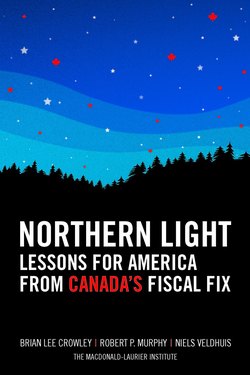Читать книгу Northern Light: Lessons for America from Canada's Fiscal Fix - Robert P. Murphy - Страница 29
На сайте Литреса книга снята с продажи.
Source: CBO Historical Budget Data, tables F-3 through F-5.
ОглавлениеAs figure 1.3 illustrates, since the 1970s there has been growth across all major components of federal spending. The massive surge in federal spending cannot be blamed simply on “mandatory” spending programs such as Medicare, Social Security, and interest on the federal debt, nor can it even be blamed on military spending, which many would view as necessary because of the US role in world affairs. No, even “nondefense discretionary" spending has steadily risen throughout the decades. Figure 1.3 makes it clear that the US federal government has a widespread, systemic spending problem that cannot be explained away by particular factors beyond the control of legislators.
Later we will specifically discuss the problem of entitlement spending, but here we point out their growth as a fraction of the federal budget. In 1972, Social Security, Medicare, Medicaid constituted 23 percent of total federal spending. By 2011, they had risen to 43 percent. According to the 2012 Congressional Budget Office (CBO) forecast, by the year 2050 Social Security and other health care spending (which includes the legislation popularly known as “ObamaCare”) will absorb 67 percent of the federal budget.2 Clearly, to solve the federal spending problem in the long term, the explosive growth in entitlements must be addressed.
